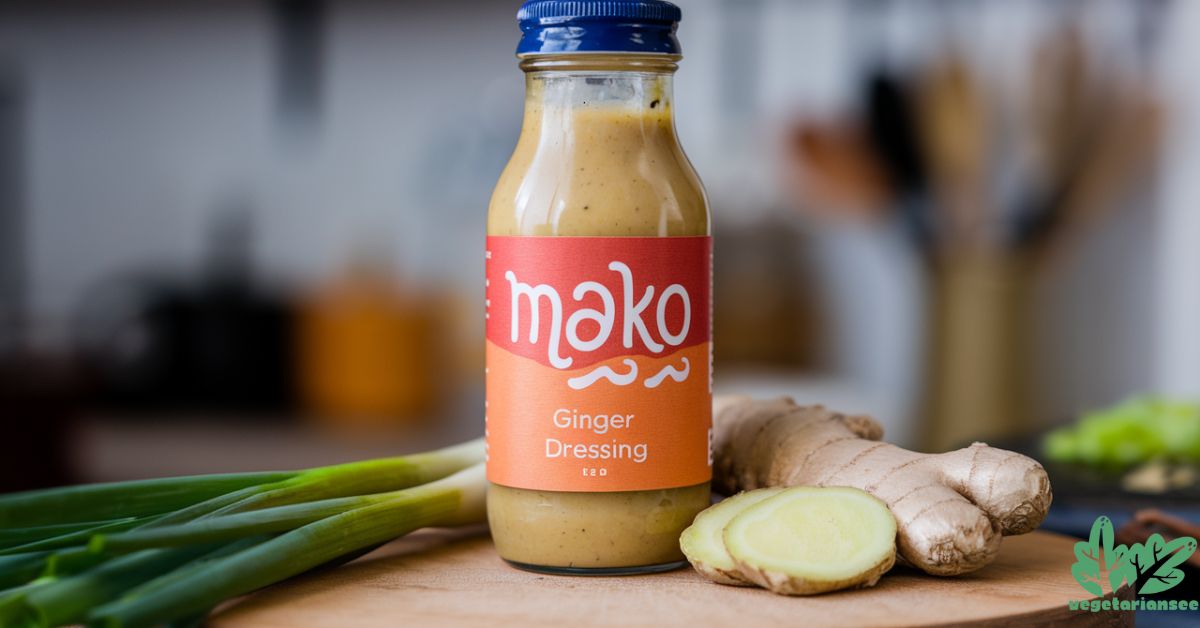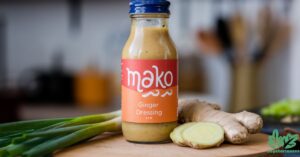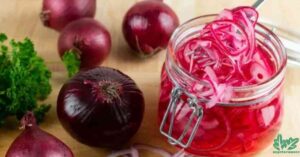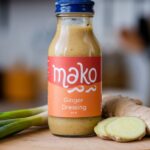Makoto Ginger Dressing brings vibrant flavor to dishes, but store-bought options often contain preservatives and lack that fresh, homemade touch. This can leave food lovers unsatisfied, as they miss out on the rich, authentic taste only freshly prepared ingredients can deliver.
With the right ingredients and techniques, you can recreate this beloved dressing at home, ensuring every meal bursts with flavor. In this guide, you’ll find a complete breakdown of the ingredients, easy-to-follow recipes, and creative ways to use Makoto Ginger Dressing beyond salads. Get ready to transform your meals with this versatile and deeply satisfying dressing.
What is Makoto Ginger Dressing?
Makoto Ginger Dressing is a popular Japanese-style dressing known for its fresh, bold flavors. Combining sweet, savory, and slightly spicy notes, this dressing uses fresh ginger, soy sauce, rice vinegar, and a hint of sweetness for a balanced taste.
Unlike many dressings, Makoto Ginger Dressing has a chunky texture, bringing a delightful mouthfeel to salads and other dishes. Its unique combination of ginger’s warmth, the tang of vinegar, and a savory umami element makes it a versatile addition to a variety of meals.
The Origin of Makoto Ginger Dressing Recipe
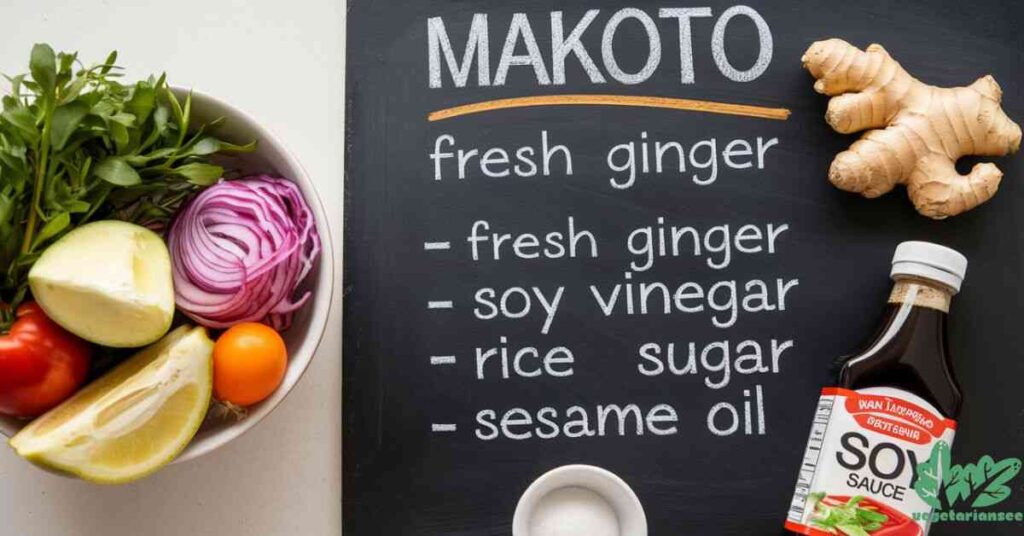
The origin of Makoto Ginger Dressing dates back to Japanese-inspired culinary traditions in the United States. Originally crafted in the late 20th century, it was created to bring authentic Japanese flavors to American kitchens. Its blend of ginger and soy sauce reflects Japanese flavors, but the dressing has evolved to meet diverse tastes globally.
Over time, Makoto dressing became a staple in Japanese-American cuisine, appearing in grocery stores and homes across the U.S., popularized for its authentic yet adaptable flavor.
Key Ingredients in Makoto Ginger Dressing
The classic Makoto Ginger Dressing includes a few essential ingredients that create its signature flavor. Fresh ginger is the star, giving it a warm, slightly spicy taste. Rice vinegar adds tanginess, while soy sauce provides a savory depth. A bit of carrot or apple gives a touch of sweetness, balancing the flavors.
Sesame oil offers a subtle nutty aroma, while a hint of brown sugar rounds out the dressing. Together, these ingredients create the unmistakable taste and texture of Makoto dressing, which pairs well with many types of dishes.
Herbs and Spices that Enhance Makoto Ginger Dressing
Fresh herbs and spices can elevate Makoto Ginger Dressing and enhance its flavors. Key ingredients like ginger and sesame add warmth and depth, while rice vinegar adds tang. Adding a pinch of garlic or ground mustard can boost the dressing’s savory notes.
Fresh cilantro or green onion also pair well with Makoto dressing, giving it a fresh, herby taste. For a touch of heat, red pepper flakes or wasabi can be included. These herbs and spices give Makoto Ginger Dressing its versatile, dynamic flavor profile.
Cultural and Traditional Variations of Makoto Ginger Dressing
Makoto dressing has become a versatile ingredient adapted by different cultures. Its Japanese roots have inspired creative twists from Hawaii, Korea, China, and even India, each adding unique flavors to the original.
These cultural variations bring new ingredients, such as tropical fruits in Hawaiian versions or spices in Indian adaptations. Each twist honors the traditional Makoto Ginger Dressing recipe while introducing local flavors. This blend of culinary styles has made Makoto dressing a global favorite, enjoyed across many cuisines today.
Classic Japanese Style
The authentic Japanese version of Makoto dressing stays true to its roots, featuring traditional ingredients like fresh ginger, soy sauce, and rice vinegar. This version is often made with simple, pure ingredients to highlight natural flavors.
Freshly grated ginger adds warmth, while soy sauce and rice vinegar bring savory and tangy notes. Sesame oil or toasted sesame seeds often add depth and nuttiness. This classic style reflects the simplicity and balance that Japanese cuisine values, making it a favorite choice for salads and marinades.
Hawaiian Twist
The Hawaiian-inspired Makoto dressing adds tropical flavors for a unique twist. Pineapple or mango brings a fruity sweetness, while hints of coconut aminos replace soy sauce for a milder flavor. Sometimes, a dash of lime juice or ginger-infused oil is added for a fresh island vibe.
Hawaiian Makoto dressing pairs well with leafy salads, seafood, and grilled vegetables, bringing a light, tropical taste. This variation celebrates Hawaii’s love of fresh, flavorful ingredients, blending perfectly with the classic Makoto Ginger Dressing elements.
American Adaptation
The American adaptation of Makoto dressing keeps the dressing’s core flavors but adds a few twists to suit local tastes. Brown sugar or honey may be added for extra sweetness, while a bit of garlic or mustard gives a bold flavor.
In some versions, mayonnaise or yogurt is mixed in for a creamier texture. American Makoto dressing is a popular choice for salads, wraps, and even as a dipping sauce. It offers a sweeter, richer taste that appeals to American flavor preferences, making it versatile and widely enjoyed.
Vegetarian and Vegan Options
For vegetarian and vegan-friendly Makoto dressing, plant-based substitutes are used to keep it flavorful and accessible. Soy sauce or tamari remains the base, and sweeteners like maple syrup or agave can replace honey. Olive oil or a dash of sesame oil adds richness, while fresh ginger, carrot, and apple bring natural sweetness.
Vegan Makoto dressing is easy to make and pairs well with salads and grilled veggies, keeping the same bold taste without any animal-based ingredients. It’s a great option for those looking for a plant-based dressing.
Korean, Chinese, Thai, and Indian Influences
Cross-cultural adaptations of Makoto dressing showcase the dressing’s versatility in Korean, Chinese, Thai, and Indian cuisines. In Korean-inspired Makoto dressing, gochujang or sesame paste adds a spicy, savory kick. Chinese variations might include hoisin sauce or garlic for extra depth.
Thai-inspired versions use lime, fish sauce, and chili flakes, while Indian-style Makoto dressing incorporates turmeric or cumin. These fusion recipes create new flavors by blending Makoto dressing with regional spices and ingredients, making it a unique option for a variety of dishes.
Recipe Directions for Makoto Ginger Dressing
Making Makoto dressing is straightforward and quick. Start by preparing the main ingredients, including fresh ginger, a small apple, carrot, and garlic. Chop everything into small pieces for easier blending.
Place the ingredients in a blender or food processor, then add soy sauce, rice vinegar, sesame oil, honey, and light brown sugar. Blend until the mixture is smooth but with a slight texture. Adjust seasoning with salt and extra ginger if needed. Store Makoto dressing in the refrigerator in an airtight container for up to a week. Shake well before each use.
Uses for Makoto Ginger Dressing Beyond Salad
Makoto dressing is more versatile than just a salad topping. It makes an excellent marinade for chicken, tofu, or fish, adding a zesty flavor to these proteins. You can also use it as a dipping sauce for roasted veggies or spring rolls. Some even toss it with noodles for an Asian-inspired pasta.
For sandwiches or wraps, Makoto dressing works well as a tangy, flavorful spread. Its mix of sweet, savory, and spicy notes complements many types of dishes beyond traditional salads.
Popular Salad Recipes Featuring Makoto Ginger Dressing
Several salad recipes bring out the best in Makoto dressing. A classic green salad with mixed greens, cucumber, shredded carrots, and sliced avocado pairs well with this dressing. Another favorite is a crunchy cabbage slaw, which combines shredded cabbage, bell peppers, and green onions.
For a heartier option, try a grilled chicken salad with edamame, radish, and sesame seeds, topped with Makoto dressing. These salads let the dressing’s bold flavors shine, adding a fresh and lively twist to each dish.
Preparation Methods: Blending vs. Whisking
The preparation method can change the texture of Makoto dressing. Blending gives a smoother, more consistent texture and blends all ingredients fully. Whisking, on the other hand, creates a more rustic feel, allowing small chunks of apple, ginger, and carrot to remain, adding texture.
Blending is ideal if you prefer a silky finish, while whisking works if you want a thicker dressing with bits of fresh ingredients. Both methods bring out the dressing’s unique flavor but offer different experiences.
Flavor Enhancers in Makoto Ginger Dressing
Several key ingredients make Makoto dressing flavorful. Fresh ginger adds a warm, citrusy taste, while rice vinegar gives it a tangy brightness. Bragg Liquid Aminos or soy sauce adds depth and umami.
Sesame oil introduces a nutty, rich quality, while honey or light brown sugar balances the savory elements with a touch of sweetness. These ingredients work together, creating a dressing that’s both flavorful and balanced, making Makoto dressing a favorite for many dishes.
Key Flavor Ingredients: Fresh Ginger, Rice Vinegar, and More
Each ingredient in Makoto dressing plays a crucial role. Fresh ginger provides a zesty warmth, essential for the dressing’s flavor. Rice vinegar adds acidity, cutting through the richness. Sesame oil introduces a subtle, nutty depth, enhancing the dressing’s texture.
Honey or brown sugar balances these flavors with sweetness, while a touch of garlic brings aromatic notes. Together, these ingredients make Makoto dressing a blend of sweet, spicy, and savory tastes, creating a unique profile that complements various foods.
Comparing Homemade vs. Store-Bought Makoto Ginger Dressing
When deciding between homemade and store-bought Makoto dressing, consider both options’ pros and cons. Homemade Makoto dressing offers freshness and allows for ingredient control. You can adjust flavors to your liking and use high-quality ingredients. However, it requires preparation time.
Store-bought versions are convenient and save time but might contain preservatives or added sugars. They can lack the freshness of homemade dressing. Ultimately, the choice depends on your priorities, whether you value convenience or flavor control.
Scaling the Makoto Ginger Dressing Recipe
Scaling the Makoto dressing recipe is simple. If you want to make a larger batch, just multiply the ingredient amounts by the number of servings you need. For smaller portions, divide the quantities accordingly.
This flexibility allows you to cater to different occasions, whether it’s a family dinner or a picnic. Remember to adjust the blending time based on the volume to ensure everything mixes well. Scaling up or down makes it easy to enjoy Makoto dressing whenever you need it.
Nutritional Profile of Makoto Ginger Dressing
The nutritional profile of Makoto dressing highlights its health benefits. A typical serving has around 50 calories, primarily from healthy fats and natural sugars. It provides vitamins from fresh ingredients like ginger and carrots.
The dressing is low in saturated fats, making it a good choice for health-conscious individuals. Using fresh ingredients means you get a nutritious boost without compromising flavor. This makes Makoto dressing a delightful addition to salads and meals while supporting a balanced diet.
Dietary Considerations and Restrictions
When it comes to dietary considerations, Makoto dressing can accommodate various needs. It can be made gluten-free by using gluten-free soy sauce or tamari. For those watching their sugar intake, reducing honey or using a sugar substitute works well.
Additionally, you can create a vegan version by skipping honey and using a plant-based sweetener. This versatility makes Makoto dressing a suitable option for many dietary restrictions, allowing everyone to enjoy its bold flavors.
Makoto Ginger Dressing
Here’s the nutrition information for Makoto Ginger Dressing presented in a table format:
| Nutrient | Amount per Serving (2 tablespoons) |
| Calories | 50 |
| Total Fat | 4g |
| Saturated Fat | 0.5g |
| Carbohydrates | 4g |
| Sugars | 2g |
| Protein | 1g |
This table illustrates the nutritional balance of Makoto dressing, making it a healthy option for various meals.
Role of Makoto Ginger Dressing in a Balanced Diet
Makoto dressing plays a positive role in a balanced diet. Its fresh ingredients provide essential nutrients while enhancing the flavor of salads and other dishes. By adding this dressing to your meals, you increase vegetable intake, which is key for good health.
The dressing’s combination of healthy fats, vitamins, and minerals contributes to overall well-being. Incorporating Makoto dressing into your meals makes it easier to enjoy nutritious foods without sacrificing taste.
Ingredient Substitutions for a Healthier Makoto Ginger Dressing
You can make Makoto dressing even healthier with ingredient substitutions. For example, use less honey or a sugar substitute like agave syrup to lower sugar content. Instead of regular soy sauce, opt for low-sodium versions to reduce sodium intake.
You can also replace sesame oil with a lighter oil like grapeseed for a healthier fat option. These adjustments maintain the dressing’s flavor while making it more suitable for various dietary needs and preferences.
Read This Blog: Sumac Pickled Onions: Making Middle Eastern Condiment 2024
Tips for Storing and Using Makoto Ginger Dressing
To keep Makoto dressing fresh, store it in an airtight container in the refrigerator. It should last up to one week. Always give it a good shake before using, as ingredients may separate.
Use it creatively by drizzling it over grilled vegetables, marinating chicken, or adding it to stir-fries. These tips help you make the most of your dressing, ensuring you enjoy its bold flavors in various dishes.
Flavor and Consistency Adjustments
Adjusting the flavor and consistency of Makoto dressing is easy. If you find it too tangy, add a touch of honey or sugar to balance it out. For extra heat, mix in more fresh ginger or a dash of chili flakes.
If the dressing is too thick, thin it with a bit of water or additional rice vinegar. Experimenting with these adjustments allows you to achieve the perfect taste and texture that suits your preferences.
Also Read This Blog: The Ultimate Guide to Whole Grain Mustard: Everything You Need to Know
Shelf Life of Homemade Makoto Ginger Dressing
The shelf life of homemade Makoto dressing is about one week when stored properly in the refrigerator. To extend freshness, make sure the container is airtight. You can also freeze the dressing in small portions for up to three months.
This way, you have a quick flavor boost ready when needed. Always check for changes in color, smell, or taste before using to ensure it remains safe and enjoyable.
Tools and Equipment Needed for Makoto Ginger Dressing
To make Makoto dressing efficiently, you need a few essential tools. A good blender or food processor will help achieve a smooth consistency. A cutting board and knife are necessary for preparing the ingredients.
Additionally, measuring cups and spoons ensure you use the right amounts of each ingredient. Having these tools on hand makes preparing Makoto dressing easy and enjoyable, allowing you to focus on creating delicious flavors.
Frequently Asked Questions
What is Makoto ginger dressing?
Makoto ginger dressing is a flavorful salad dressing known for its sweet, tangy, and umami taste. It typically features ingredients like ginger, soy sauce, and sesame oil, making it a versatile addition to salads and more.
Where is Makoto dressing made?
Makoto dressing is made in the United States. It was created by a Japanese chef who wanted to share authentic Japanese flavors with a broader audience.
Is Kewpie a salad dressing?
Yes, Kewpie is a type of Japanese mayonnaise often used as a salad dressing. It has a rich, creamy texture and a slightly sweet flavor.
What is Japanese dressing made of?
Japanese dressing often includes ingredients like rice vinegar, soy sauce, sesame oil, and various vegetables or fruits for flavor.
What is ginger dressing made of?
Ginger dressing is made from fresh ginger, vinegar, oil, soy sauce, and often includes ingredients like garlic and onion for extra flavor.
What is ginger called in Japan?
In Japan, ginger is called “shoga” . It is a common ingredient in Japanese cuisine, adding a zesty flavor to many dishes.
Conclusion
Makoto ginger dressing stands out for its unique blend of flavors and versatility. Made with fresh ingredients like ginger and sesame, it enhances any salad or dish. You can easily make your own at home or enjoy the store-bought version.
Whether you’re tossing a salad or marinating meat, this dressing adds a delightful zing to your meals. Explore the many ways to enjoy Makoto dressing and elevate your culinary creations.

Ethan Henry with 8 years of expertise in bamboo, excels in sustainable design, construction and product development. His passion for eco-friendly solutions has driven innovative advancements in bamboo-based industries.
